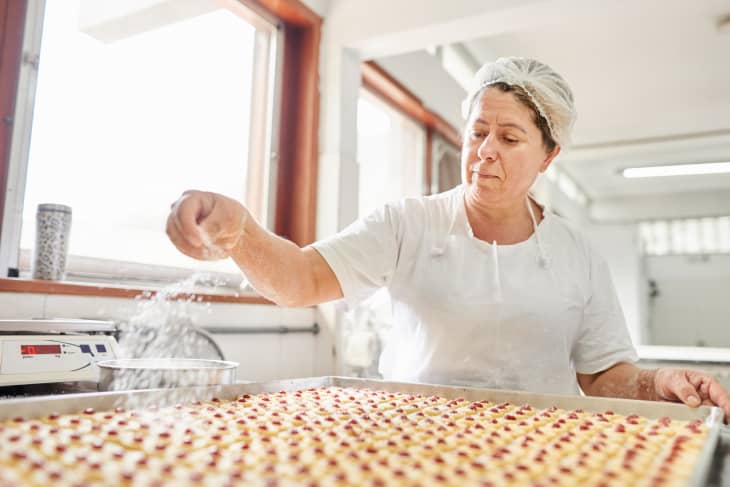5 Smart Cleaning Tips to Steal from a School Cafeteria Worker
It’s back-to-school time! As classes start up this season, school cafeteria workers are busy preparing and serving food, supervising students, and keeping their work areas sparkling clean. We thought, if they can keep big and bustling school cafeteria kitchens humming along, surely they’d be able to help us whip our home kitchens into shape!
So we reached out to a knowledgeable school cafeteria worker for the inside scoop on how to keep our own kitchens nice and clean. Here are her five no-nonsense tips worth borrowing.
1. Use gloves when cleaning (and change them often).
Of course, school cafeteria workers wear gloves for serving up lunch. But gloves are also a must for cleaning tasks, says Lisa Leary, the cafeteria manager at Jessup Elementary School outside of Baltimore, Maryland.
Gloves are an obvious choice for proper sanitation, but they also save workers’ hands, and cut down on exposure to hot water and harsh cleaning agents. “We wear gloves for everything, and we change them all the time,” she says. Their brand of choice is Emerald, and they stock both pre-powdered and powder-free gloves for cafeteria workers. Keeping a box or two with your cleaning supplies will ensure that you’re always ready to tackle the dirty jobs, like scrubbing the floors or cleaning the oven.
2. Ditch the bleach for a greener option.
Leary says her school district has introduced greener processes into their daily operations. They’ve stopped cleaning with ultra-harsh agents, like bleach, in favor of gentler products. School cafeterias are serious about cleanliness and disinfecting, so you can trust that they’re not sacrificing on performance. Leary says they opt for a safer disinfectant such as Spic and Span, approved by the U.S. Environmental Protection Agency.
3. Keep two sets of cleaning supplies.
At home, most of us have one set of cleaning supplies for tackling the whole house. But at Jessup Elementary, Leary’s team uses a different set of mops for the floors in the cafeteria and another set for bathrooms. While you might not want to invest in doubles of everything, keep highly used cleaning tools, like cleaning brushes and dish rags, separate.
4. Opt for disposable towels for really dirty jobs.
While some schools have washers and dryers to launder reusable cleaning cloths, Leary says that at her school, they’ve opted for disposable cleaning towels. Here’s why: They’re less maintenance and much more sanitary than questionable germy sponges. This disposable type, for example, is sturdier than a paper towel, meaning it can be used for multiple jobs throughout the day. At quitting time, the staff trashes the used towels and starts fresh the next day.
5. Use glass cleaner for stainless steel.
School cafeterias contain a lot of stainless steel. And with good reason: It’s so easy to clean! Rather than paying for speciality wipes and polishes, Leary says her team uses a simple all-purpose glass cleaner to keep steel surfaces sparkling clean.
Do you use any of these tips to clean your kitchen at home? Tell us in the comments below!
